Read Bob Linden’s article “A Plate of Ahimsa, Please” published in the March 2005 edition of Yogi Times. This articles responds to a previous article, “Conscious Carnivores”(as if that’s possible), published in Yogi Times (Dec/Jan 2005).
A Plate of Ahimsa, Please
(putting peace on the menu)
By Bob Linden
How curious it is for me that I should be composing an article for a yoga magazine like Yogi Times, which I discovered for the first time in December, when the extent of my previous involvement with yoga was attempting a few asanas with a friend when I worked at a rock radio station in Omaha. I enjoyed the magazine’s subject matter, encompassing mind, body, health, and spirituality, and how yoga aims to unite all of these – even the word itself means union. But then, on page 34 of the December issue was an article called Conscious Carnivores and I asked myself, “How can that be?”
I found the concept of conscious carnivores to be a stupefying oxymoron and asked the editors of Yogi Times to allow me to respond. As a student of vegetarianism and the host of a vegan-based radio show, I welcomed the challenge of investigating the yogic-vegetarian connection and tradition, which I thought would have to be natural and apparent. After my study, I am even more convinced that the conscious, awakened, enlightened, and evolved path is to live vegan.
The precept of ahimsa (non-violence, not causing pain), which holds the preeminent place in yama, the first of the eight limbs of Patanjali’s Yoga Sutras, is the foundation upon which the yogic tradition of vegetarianism is based. However, ahimsa as a way of life was observed long before the development of yoga as we know it. Many religious historians recognize Jainism as one of the oldest religions in the world, one of the parent religions of India, and a relative of Hinduism and Buddhism. Professor Christopher Key Chapple, in his book, ‘Non-violence to Animals, Earth, and Self in Asian Traditions,’ traces the concept of ahimsa to an epoch predating the sacred Hindu texts of the Vedas and Upanishads in which the cardinal principle of Jain communities was ahimsa, and complete vegetarianism was a foundational practice. Chapple notes the Jain influence on Hinduism as exemplified in the epic poem of 100,000 verses, said to be the world’s longest – the Mahabharata, one of the ancient epic poems of India, wherein it is said: “Who can be more cruel and selfish than he who augments his flesh by eating the flesh of innocent animals?”
‘Ihe yoga school of Patanjali encouraged strict vegetarianism based on the Jain moral codes that had been passed down for centuries.
The Vedic scriptures of India, which themselves predate Buddhism, also stress non-violence as the ethical basis for vegetarianism. “Meat can never be obtained without injury to living creatures,” states the Manu-samhita, the an-cient Indian code of law. “Let one, therefore, shun the use of meat.”
Hinduism teaches that vegetarianism is a path to holiness, and that eating animals – and thus participating in the cycle of inflicting injury and killing – creates karma that opens one to the likelihood of experiencing similar suffering in the future. Hinduism teaches that in order to live in higher consciousness and in peace and happiness, one cannot eat animals. In particular, Hindus do not eat beef because the cow is sacred. The Hindi word for cow is aghnaya, which means, “not to be killed:’ Gautama Buddha is known for preach-ing against killing animals, and established ahimsa and vegetarianism as fundamental steps on the path of self-awareness, saying, “do not butcher the ox that plows thy fields,” and “do not indulge a voracity that involves the slaughter of animals.”
No “blessings” or “rituals” or “sacred traditions” to justify animal sacrifice and consumption can deny the barbaric treatment that the ten billion land animals who are killed in the U.S. each year for food must endure. Though public relations and marketing firms have introduced terms like organic and free range in order to produce visions of contented animals roaming free and healthy in our imaginations, practices like de-beaking of birds, de-horning of cattle, skinning, dis-membering, castration, chopping off tails and toes and branding – all without anesthesia are commonplace in slaughterhouses and farms across America and around the world. After enlightened consideration of this reality, how can we reconcile a life-path of non-vio-lence and non-killing with the consumption of meat? If we want violence out of our lives, perhaps we should remove it from our plates.
Our conscience is not the only part of us that benefits from avoiding animal products. Findings from the China Study, the largest research project ever associating diet and health, conducted by Cornell University, showed that the consumption of animal products is one of the most profound detriments to human health.
Professor T. Colin Campbell, who conducted the study, found that “70-80% of fatal disease is preventable, and the cause of that disease is animal protein, and not much of it.” Avoid-ing the destructive animal proteins, saturated fat, cholesterol, hormones, antibiotics, and pesticides that are present in meat, dairy, fish, poultry, eggs, and honey puts you at a statistical advantage for substantially lessening risks of heart disease, cancer, stroke, diabetes, arthritis, obesity, or of suffering one of the over 70 million cases of life-threatening food poisonings documented by the National Agricultural Statistics Service, mostly from animal product consumption, including E coli, salmonella, listeria, campylobacter, and others.
In this age of Mad Cow disease, the wisdom of the ancient sages seems wiser than ever. The cow is sacred. Do not eat her for your own good – and that of the planet.
The impact of animal product consumption on individual human health parallels the disastrous impact of meat and dairy production on the environment. According to a study conducted by the Stockholm International Water Institute (SIWI), it requires only ten thousand gallons of water annually to produce food for one vegan. It requires 320,000 gallons to support the diet of one meat eater, meaning that thirty-two vegans can be fed for a year using the same amount of water required to feed one meat-eater. It is estimated that 8,500 gallons of water are required to produce a pound of beef, versus 25 gallons for a pound of wheat. Meat production accounts for half of all water usage and half of all water pollution, as well as serving as the major contributor to deforestation, soil erosion, desertification, and significant global warming emissions of carbon dioxide, nitrousoxide, and methane. All of this is coming at a time when we are warned by major international environmental studies that the threshold for a global warming catastrophe, agricultural failure, water short- ages and droughts, increased disease, sea-level rise, and the death of forests are imminent unless we change our present course.
An important solution is living a vegan lifestyle, consuming fruits, vegetables, nuts, grains, seeds, legumes. Today we can enjoy nutritious alternatives to every animal food on the market, from burgers to hot dogs, milk to ice cream, cheese to mayonnaise, and on and on. A commitment to ahimsa and to stopping violence against animals means more than protecting our arteries and our spirits. The lives we save may be our own. The planet we save is the only one we have.


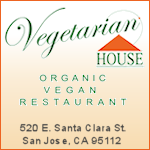
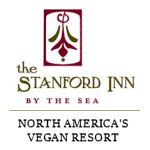







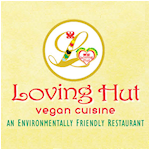
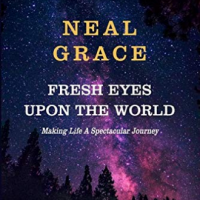
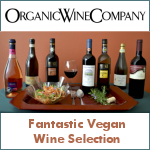
Good article.
Hi, I just found your website, thanks for the work you do. Your information is interesting but I believe your statistic of 8500 gallons of water to create one pound of cow (beef) is high. From what I have found it takes about 2500 gallons of water. In addition it takes 950 gallons of water to produce one gallon of pus milk and 890 gallons to produce 1 pound of cheese. I agree these amounts are a huge waste of resources, and lives, for humans to eat animals. namaste’, rachel
Hi Rachel, Thanks for your kind words. There are quotes that it takes 8500 gallons of water to produce a pound of beef. It has also been said that it takes 8500 gallons of water to produce the grain to produce a pound of beef.
https://vegsource.com/articles2/water_stockholm.htm